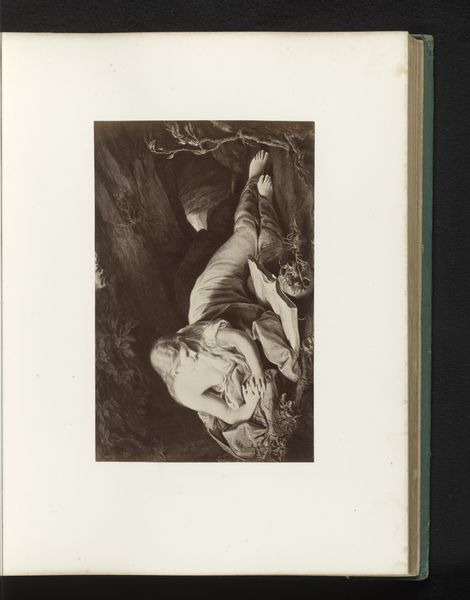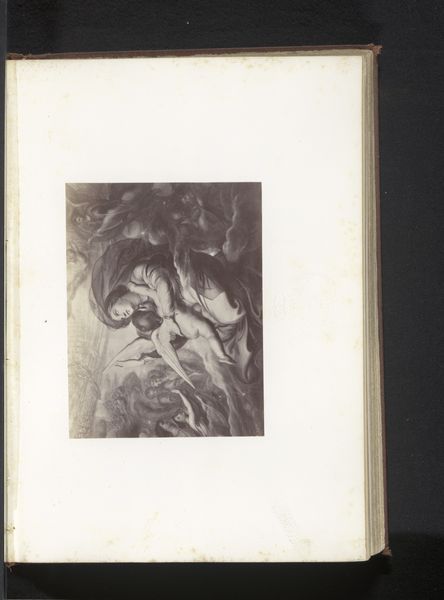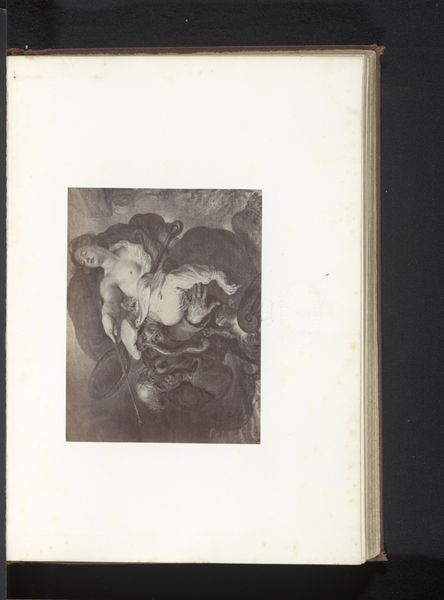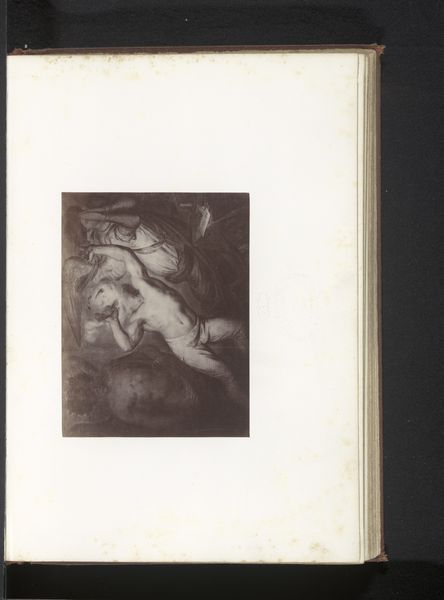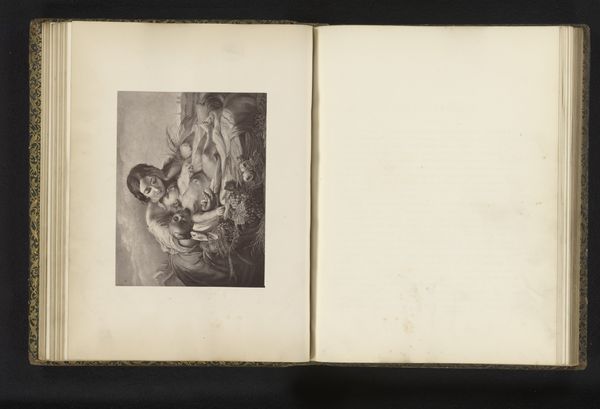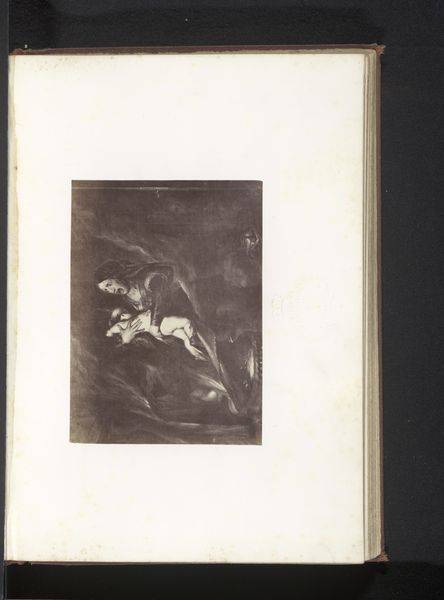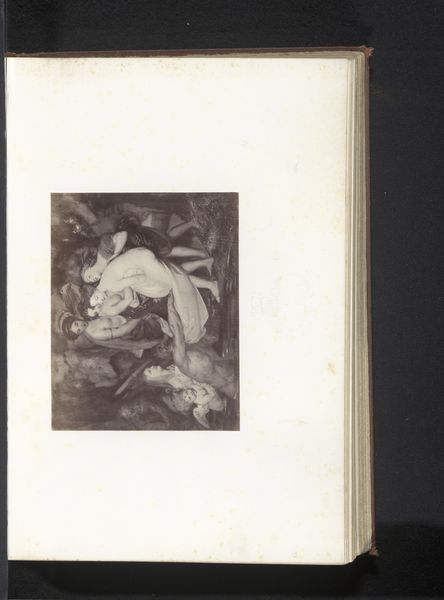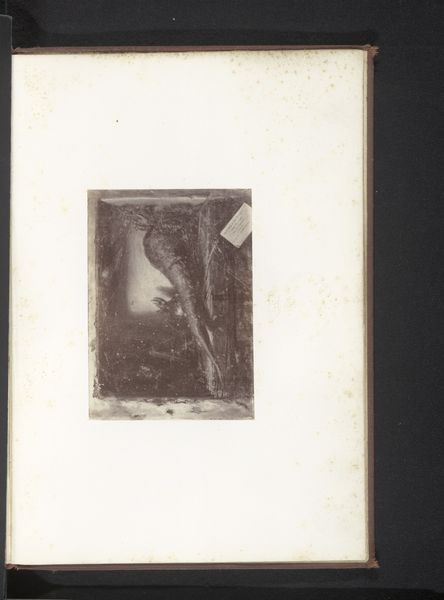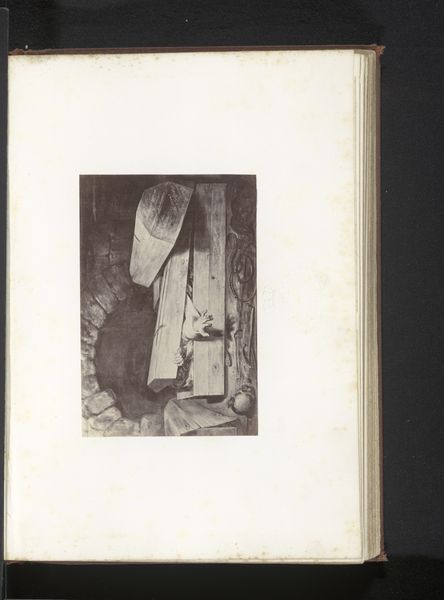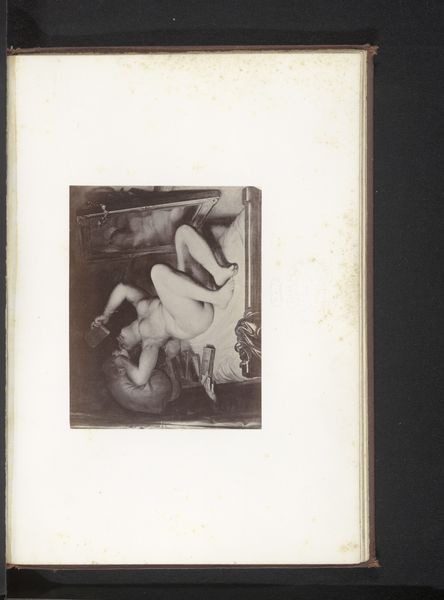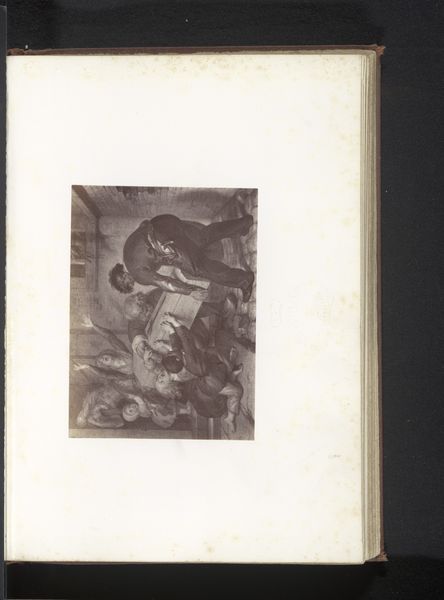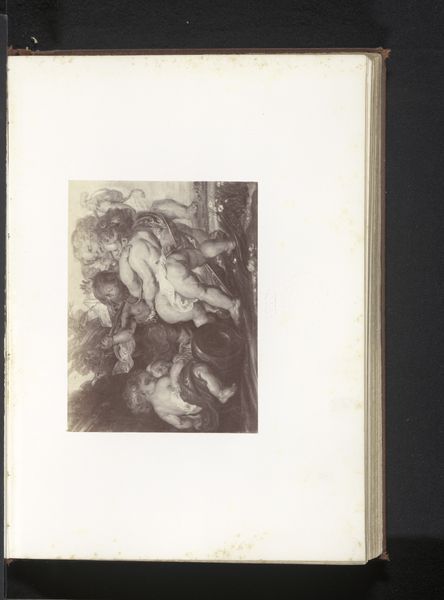
Fotoreproductie van Honger, waanzin en misdaad door Antoine Wiertz before 1868
0:00
0:00
Dimensions: height 105 mm, width 114 mm
Copyright: Rijks Museum: Open Domain
Curator: This gelatin-silver print captures a reproduction of a work by Antoine Wiertz, dating from before 1868. It’s titled "Fotoreproductie van Honger, waanzin en misdaad," which translates to "Photographic reproduction of Hunger, madness and crime." Editor: Woah. Intense. It looks like a desperate scene from a nightmare – all swirling darkness and emaciated figures. Curator: The artwork exemplifies the romanticist style and delves into powerful social themes. It presents a clear figuration of those themes. Understanding it fully requires some context about Wiertz's preoccupations and the socio-political milieu he occupied. The rise of industrial capitalism was happening, and so much for so many was left behind. Editor: Absolutely. The mood hits you immediately – you feel the suffocating anxiety of the figures. Like some sort of Goya’s black paintings! It seems to me less about the explicit depiction and more about that immediate emotive rawness. Curator: I'm interested in what it means to reproduce an artwork like that during the rise of photography, in what ways that democratized art viewership for the bourgeois that wouldn't necessarily be present in an exhibition with the actual artwork. Editor: Interesting point. Suddenly, difficult artworks reach homes. And not as art objects so much but… as reproducible images, flattened, altered...a shift! It also brings to the forefront the question of original versus reproduction. Does the image change when a piece such as this, one focused on immense pain and suffering, is so accessible? Curator: Exactly! The ability to possess a copy perhaps dulled the intended shock, normalizing these very themes. On the other hand, maybe mass exposure cultivated some collective social consciousness. The complexities are multilayered. Editor: Hmm. Looking at this has put me in a strange, reflective mood. These shades are anything but black and white. Curator: It highlights that these kinds of issues we are confronting here, especially economic issues are nothing new, that maybe it could offer a perspective of the kind of work and organization we need today.
Comments
No comments
Be the first to comment and join the conversation on the ultimate creative platform.
